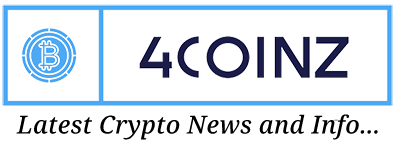Injective Launches Native EVM, Promising Faster, Cheaper DeFi
The upgrade aims to make Injective a go-to platform by combining Ethereum compatibility with Injective’s existing high-speed infrastructure.
By Margaux Nijkerk, AI Boost|Edited by Stephen Alpher
Nov 11, 2025, 3:00 p.m.

- Layer-1 blockchain Injective has rolled out what it calls its most significant upgrade yet: a native Ethereum Virtual Machine (EVM) layer.
- The upgrade aims to make Injective a go-to platform for developers and institutions by combining Ethereum compatibility with Injective’s existing high-speed infrastructure.
- Developers building on Injective can build using both WebAssembly (WASM) and EVM environments within one unified ecosystem, so applications can share liquidity, assets, and modules across the network, removing one of the biggest pain points in blockchain development: fragmentation.
Layer-1 blockchain Injective has rolled out what it calls its most significant upgrade yet: a native Ethereum Virtual Machine (EVM) layer.
The upgrade aims to make Injective a go-to platform for developers and institutions by combining Ethereum compatibility with Injective’s existing high-speed infrastructure.
STORY CONTINUES BELOW
The news comes nearly two weeks after Injective kicked off its community buy back program, which allowed community members to commit the blockchain’s native token INJ to a pool that will be used to purchase and burn tokens, and reduce overall supply, and in return receive a 10% yield from the ecosystem’s revenue.
The launch of the native EVM on Tuesday also brings more than 40 decentralized applications (dApps) and infrastructure providers online, marking what the team describes as “a new era of onchain finance.”
A native virtual machine (VM) like Injective’s EVM acts as the blockchain’s “engine room” — it’s the environment that runs the smart contracts and applications that make decentralized finance work. Having a native EVM means developers can build Ethereum-style apps directly on Injective without extra layers or bridges, making it faster, cheaper, and more secure.
Developers building on Injective can build using both WebAssembly (WASM) and EVM environments within one unified ecosystem, so applications can share liquidity, assets, and modules across the network, removing one of the biggest pain points in blockchain development: fragmentation. With the EVM layer, developers can use familiar tools while taking advantage of Injective’s speed and near-zero gas fees. The team also shared that the Solana VM will become available soon, so Solana applications will eventually also be plugged seamlessly into Injective’s ecosystem.
For users, the change translates to faster transactions and more options. Injective boasts block times as short as 0.64 seconds and fees as low as $0.00008 per transaction.
“This launch represents Injective’s MultiVM vision coming to life,” the team wrote in their press release. “This flexibility combined with Injective’s advanced financial modules creates unprecedented opportunities for innovation.”
Read more: Injective’s TVL Climbs 14% Amid Buyback Launch, But INJ Token Sinks 8%
AI Disclaimer: Parts of this article were generated with the assistance from AI tools and reviewed by our editorial team to ensure accuracy and adherence to our standards. For more information, see CoinDesk’s full AI Policy.
More For You
Nov 3, 2025

A deep dive into Zcash’s zero-knowledge architecture, shielded transaction growth, and its path to becoming encrypted Bitcoin at scale.
What to know:
In 2025, Zcash evolved from niche privacy tech into a functioning encrypted-money network:
- Shielded adoption surged, with 20–25% of circulating ZEC now held in encrypted addresses and 30% of transactions involving the shielded pool.
- The Zashi wallet made shielded transfers the default, pushing privacy from optional to standard practice.
- Project Tachyon, led by Sean Bowe, aims to boost throughput to thousands of private transactions per second.
- Zcash surpassed Monero in market share, becoming the largest privacy-focused cryptocurrency by capitalization.
More For You
By Margaux Nijkerk, AI Boost|Edited by Nikhilesh De
20 hours ago

The proposal, called “UNIfication,” would activate protocol fees, burn millions of UNI tokens and consolidate the project’s key teams under a single strategy.
What to know:
- Uniswap Labs and Uniswap Foundation, two of the main firms that help steer the Uniswap protocol, are joining forces to propose a new sweeping governance proposal that would completely change the way the ecosystem works today.
- The proposal, called “UNIfication,” aims to align incentives across the Uniswap ecosystem and position the protocol as the default exchange for tokenized assets. It would do this by activating protocol fees, burning millions of UNI tokens, and consolidating the project’s key teams under a single growth strategy.
-
Back to menu
Prices
-
Back to menu
-
Back to menu
Indices -
Back to menu
Research
-
Back to menu
Consensus 2026 -
Back to menu
Sponsored
-
Back to menu
Videos -
Back to menu
-
Back to menu
-
Back to menu
Webinars
Select Language










